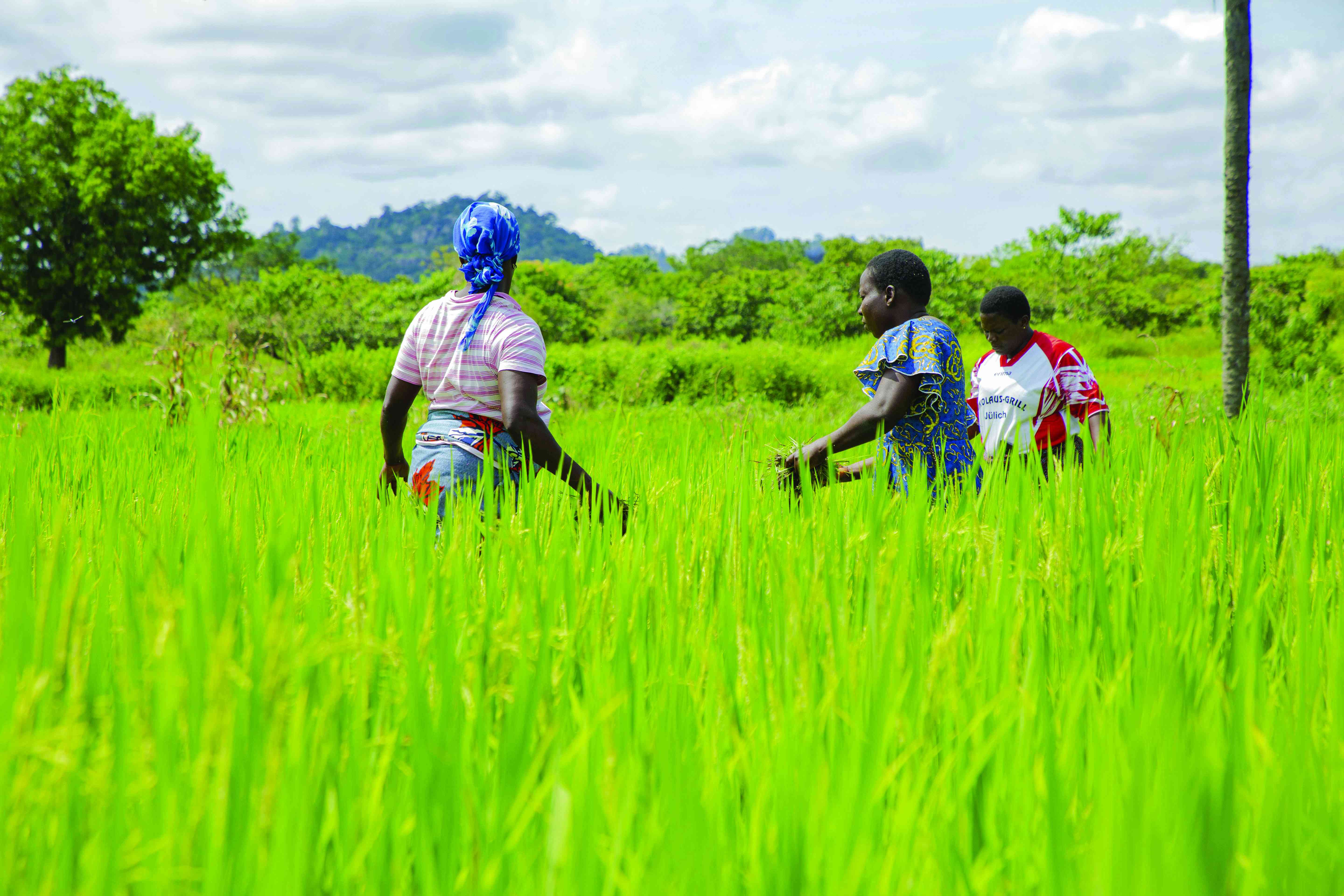
TO mitigate the impacts of climate change on GBV, it is crucial to incorporate gender perspectives into climate policies and disaster response strategies. This involves:
Data collection and research
Developing comprehensive data collection methods to understand the intersection of climate change and gender-based violence (GBV) is crucial for informing effective policies and interventions.
Reliable data is essential for identifying the specific vulnerabilities faced by different populations, particularly women and marginalized groups, in the context of climate change.
Current research often lacks the granularity needed to capture the nuanced impacts of environmental stressors on GBV.
By implementing targeted data collection strategies — such as surveys, interviews, and participatory assessments — researchers can gather detailed information on the prevalence, types, and contexts of violence experienced by individuals in climate-affected areas.
This data can illuminate the pathways through which climate change exacerbates GBV, such as resource scarcity, displacement, and economic stress.
Furthermore, disaggregating data by gender, age, and socio-economic status helps to highlight the specific needs and experiences of diverse groups.
- Ngozi Mine’s young mothers suffering in silence
- Ngozi Mine’s young mothers suffering in silence
- Village Rhapsody: Engage men to end gender-based violence
- Chics’ Galaxy: Takawira fights in the girl child’s corner
Keep Reading
This information is vital for crafting gender-sensitive policies that address the root causes of both climate vulnerability and GBV.
Ultimately, integrating comprehensive data collection into climate change and GBV research can lead to more targeted interventions, enhance community resilience, and ensure that vulnerable populations receive the support they need to navigate the complex challenges posed by climate change.
Empowering women
Empowering women in decision-making processes related to climate adaptation and disaster management is a crucial strategy for reducing vulnerabilities in the face of climate change.
Women often possess unique knowledge and insights about their communities and the natural environment, making their participation essential in developing effective adaptation strategies.
Initiatives that actively involve women in planning and implementing climate resilience measures can lead to more inclusive and sustainable outcomes.
Programmes aimed at enhancing women's economic independence and access to resources is equally vital.
By providing women with training, financial literacy, and access to credit, these initiatives can help them build diverse income streams and invest in adaptive technologies. Economic empowerment allows women to make informed decisions about resource management and increases their resilience to climate-related shocks.
Moreover, access to resources such as land, water, and education enables women to play a proactive role in their communities, thereby enhancing their social standing and influence.
This empowerment not only reduces their vulnerability to climate impacts but also mitigates the risks of gender-based violence, as economically independent women are better positioned to advocate for their rights and safety.
Ultimately, fostering women's empowerment in climate initiatives is essential for achieving gender equity, enhancing community resilience, and promoting sustainable development in the face of climate change.
Community awareness, education
Raising awareness about the connections between climate change and gender-based violence (GBV) is essential for fostering supportive environments for survivors and promoting community resilience.
By educating communities about how climate impacts exacerbate vulnerabilities, such as increased stress and resource scarcity, awareness initiatives can help individuals understand the root causes of GBV and the importance of addressing them.
Education programmes can play a pivotal role in challenging harmful social norms that perpetuate violence against women.
They can provide critical information on gender equality, highlighting the value of women's contributions to both the community and disaster management processes.
Workshops, community discussions, and outreach campaigns can engage both men and women in conversations that dismantle stereotypes and promote respectful relationships.
Moreover, empowering community members with knowledge about available resources and support services for survivors can encourage individuals to seek help and stand against GBV.
By fostering an environment of support and understanding, communities can cultivate a culture of accountability, where violence is not tolerated, and survivors are supported.
Ultimately, integrating climate change education with gender equality initiatives can transform community dynamics, reduce instances of GBV, and enhance collective efforts to adapt to climate challenges, leading to safer and more resilient communities for all.
Integrated approaches
Integrating gender-based violence (GBV) prevention measures into climate change adaptation programmes is essential for fostering resilience and safeguarding vulnerable populations.
As communities face increasing climate-related challenges, it is crucial to create safe spaces for women and girls during disasters. These designated areas can provide not only physical safety but also access to essential services, such as medical care, psychological support, and resources for rebuilding their lives.
Additionally, providing legal support for GBV survivors is a critical component of an integrated approach.
This support can help survivors navigate legal systems, access justice, and receive protection from further violence.
Legal empowerment initiatives can also educate women about their rights, enabling them to advocate for themselves and their communities effectively.
Furthermore, implementing community-based interventions that address both climate resilience and gender equality is vital.
This involves engaging men and boys as allies in promoting gender equity, fostering discussions around harmful norms, and encouraging shared responsibilities in resource management.
By weaving GBV prevention into the fabric of climate adaptation strategies, programmes can ensure that women’s voices are heard and their needs are prioritised, ultimately leading to stronger, more equitable, and resilient communities that can withstand the impacts of climate change.
International collaboration
International collaboration is crucial in tackling the intertwined challenges of climate change and gender-based violence (GBV). Both issues transcend national borders, necessitating a unified global response that leverages diverse expertise and resources.
By forming partnerships across governments, NGOs, and international organisations, countries can share best practices, innovative solutions, and financial support, creating a more robust framework for addressing these pressing concerns.
For instance, climate change disproportionately impacts marginalised communities, often exacerbating existing inequalities and increasing the risk of GBV during crises such as natural disasters.
Collaborative initiatives can enhance the resilience of these communities by integrating gender-sensitive approaches into climate action plans.
This ensures that women's voices are included in decision-making processes, promoting their agency and safety.
Additionally, international partnerships can facilitate knowledge sharing on effective interventions, such as integrating GBV prevention and response strategies into climate adaptation programmes.
By pooling resources, countries can also fund research and develop comprehensive strategies that address both climate adaptation and the prevention of violence against women.
Ultimately, fostering global partnerships not only strengthens individual countries' responses but also contributes to a more equitable and sustainable future for all.
Inclusive policy frameworks
Inclusive policy frameworks that recognise the unique challenges faced by women and marginalised groups are essential for effective climate action.
Policymakers must engage with affected communities to ensure that their voices are heard and that their needs are addressed.
This means involving women in decision-making processes at all levels, from local to international, and ensuring that their experiences inform climate adaptation and mitigation strategies.
Moreover, policies must also address the root causes of GBV, such as poverty, inequality, and lack of access to education and healthcare. By tackling these interconnected issues, we can create a holistic response to both climate change and gender-based violence.
Building community resilience
Community resilience is a key factor in mitigating the impacts of climate change and reducing GBV.
Programmes that focus on building social cohesion, enhancing economic opportunities, and strengthening local governance can empower communities to respond effectively to climate-related challenges.
When women are actively involved in community planning and decision-making, they are more likely to advocate for measures that protect their rights and safety.
Training programmes that educate community members about the risks associated with climate change and GBV can also foster greater awareness and solidarity. Community-based organisations can play a vital role in facilitating discussions around these issues, promoting gender equality, and providing support for survivors of violence.
Role of international organisations
International organisations and non-governmental organisation (NGOs) have a critical role in addressing the intersection of climate change and GBV.
By providing funding, resources, and technical assistance, these organizations can support local initiatives aimed at preventing GBV in the context of climate change.
Additionally, they can advocate for the inclusion of GBV prevention measures in global climate agreements and frameworks.
Partnerships among governments, civil society, and international organisations can lead to innovative solutions that address both climate resilience and gender equality.
For example, initiatives that focus on sustainable livelihoods for women, such as training in renewable energy technologies or sustainable agriculture, can reduce economic vulnerability while promoting environmental sustainability.
Conclusion
The implications of climate change on gender-based violence are profound and multifaceted, necessitating a comprehensive and integrated approach to both issues.
As we face an increasingly uncertain climate future, it is essential to prioritise the rights and safety of women and marginalised groups.
By recognising the links between climate change and GBV, we can develop effective policies and interventions that not only address the immediate impacts of climate change but also work towards a more just and equitable society.
In summary, addressing the intersection of climate change and GBV requires collaboration, inclusivity, and a commitment to gender equality.
By empowering women, fostering community resilience, and implementing gender-responsive policies, we can mitigate the risks associated with climate change and create safer environments for all individuals, ultimately contributing to a more sustainable and equitable world.
The time to act is now, as the impacts of climate change continue to unfold, and so do the urgent need to combat gender-based violence in all its forms.
Ndoro-Mkombachoto is a former academic and banker. She has consulted widely in strategy, entrepreneurship and private sector development for organisations that include Seed Co Africa, Hwange Colliery, RBZ/CGC, Standard Bank of South Africa, Home Loans, IFC/World Bank, UNDP, USAid, Danida, Cida, Kellogg Foundation, among others, as a writer, property investor, developer and manager. — @HeartfeltwithGloria/ +263 772 236 341.











